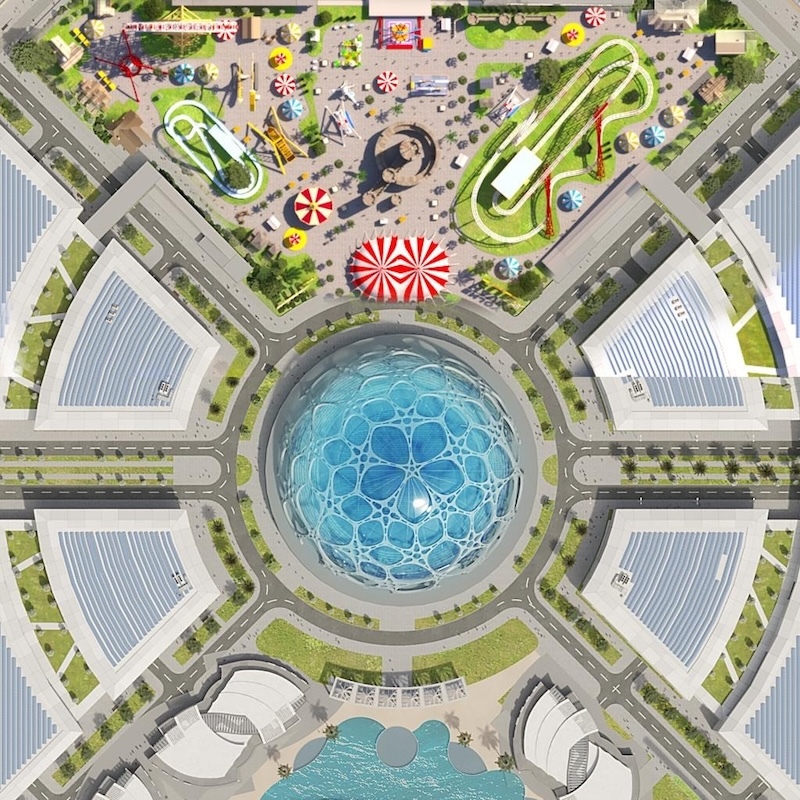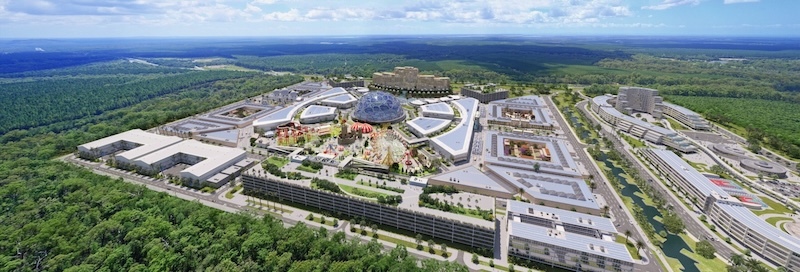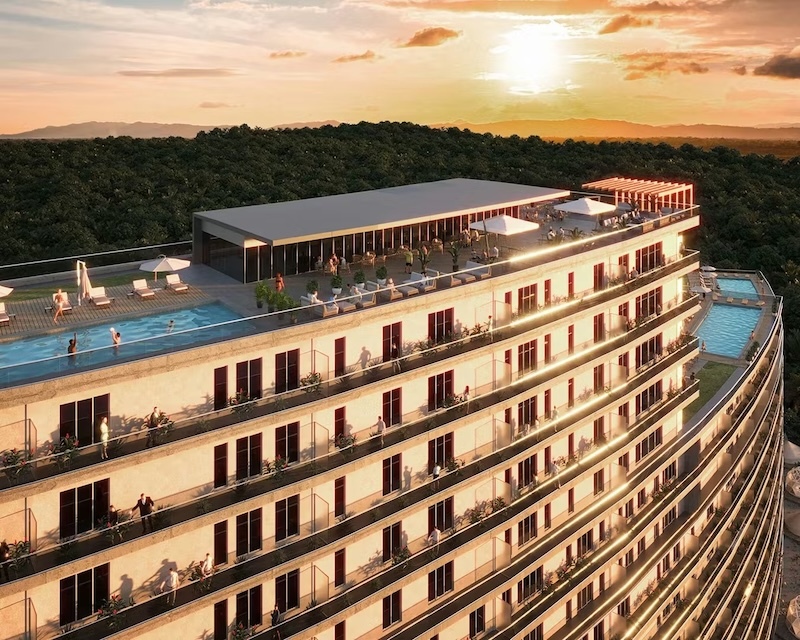Moreton Bay $2.6bn Theme Park City Plans Filed

Disney doesn’t think Australia’s population is big enough yet to feasibly accommodate one of the entertainment giant’s theme parks.
But clearly that sentiment is not raining on South-Sast Queensland’s Mickey Mouse-less parade.
A bold masterplan for a $2.6-billion integrated entertainment city dubbed Infinity Planet has been put forward for one of the country’s fastest-growing regions.
Under the proposal lodged with Moreton Bay Regional Council, it would cover a 68ha site occupied by strawberry and macadamia farmland at Elimbah, about 60km north of the Brisbane CBD.
The documents describe it as a potentially “regionally transformative” project that would deliver “a globally significant, integrated tourism and entertainment city that combines major tourist attractions, short-term accommodation, leisure, recreation, and innovation-led business activity”.
“The vision for Infinity Planet is to create a dynamic, sustainable, and future-ready tourism city that captures the imagination of visitors of all ages, offering cultural experiences for every member of the family while generating enduring employment and defining the next evolution of tourism, entertainment, and innovation for Queensland,” a planning report said.
Overall, the masterplan includes indoor and outdoor theme park attractions, 50 cultural pavilions providing a “permanent world expo”, a centrepiece 9000-seat “city hall”venue for large-scale events, conventions and performances, a 136,000sqm internationally themed retail and dining precinct, and a “globally connected” business and technology park.
As well, three towers would provide more than 700 hotel rooms, ranging from three-star to five-star accommodation plus about 50 “premium glamping suites combining resort-style amenities with an eco-tourism experience”.
According to the report, the theme park components are projected to attract between 1 million and 1.2 million visitors annually, while the experiential retail precinct is expected to draw about 1.8 million visitors a year.
About 800,000 international visitors a year are forecast to generate 278,860 room nights and spend about $88 million annually on accommodation alone.
RHC City, a development entity led by founder Ramin Ahmadi, is behind what is being pitched as “Australia’s largest purpose-built entertainment precinct”.
On social media, he describes himself as “an entrepreneur and business leader with a background in real estate development, investment, retail, and cultural projects” who has worked “across Iran, Malaysia, the Middle East, and the Far East”.
Ahmadi lists one of his career milestones as Iran’s Tehran Megamall, a landmark destination combining shopping, entertainment, culture, and innovation.
Other cited projects he has been involved in as a “co-construction and delivery partner” include Singapore’s Marina Bay Sands, Kuala Lumpur’s KL118 Tower and Mall and Baku’s JW Marriott and Four Seasons hotels.
Ahmadi said Infinity Planet would “reshape the regional economy and deliver a transformative economic and social legacy”.
“Infinity Planet will be so much more than a revolutionary tourism and leisure destination. It will truly change lives by fostering a shared understanding of our human heritage, celebrating those things that make our cultures unique, and highlighting the very best of human endeavours and achievements.
“This combination of entertainment, education and celebration of culture is a concept that has been successful in many locations across the world, particularly in the Middle East, but this is the first time it will have been delivered in Australia.”
If approved, it would be delivered across four stages with early stages slated to be completed and operational before the Brisbane 2032 Olympics.
Stages One and Two would include the delivery of “catalytic tourism infrastructure” including the theme park, cultural malls, glamping precinct and some of the planned 10,000 carparking spaces.
The subsequent Stages Three and Four would deliver the hotel towers, business and innovation precinct, and supporting residential accommodation.
The project is expected to create the equivalent of 1075 direct full-time jobs over the five-year construction period, with a further 1320 indirect full-time jobs across the supply chain.
On completion, it would generate an estimated 4670 direct and 1440 indirect positions, representing around five percent of total employment for the City of Moreton Bay.




















